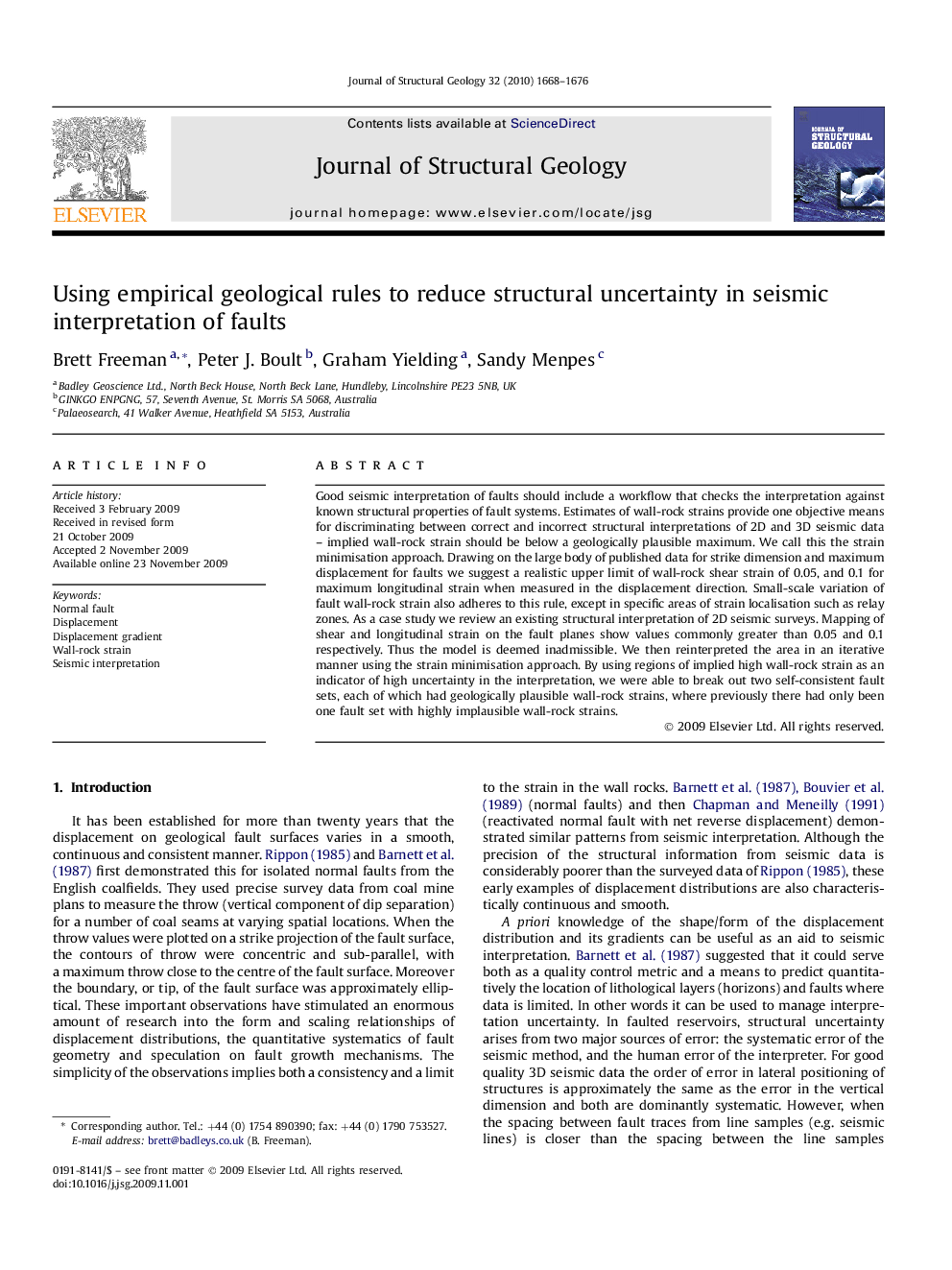| Article ID | Journal | Published Year | Pages | File Type |
|---|---|---|---|---|
| 4733791 | Journal of Structural Geology | 2010 | 9 Pages |
Good seismic interpretation of faults should include a workflow that checks the interpretation against known structural properties of fault systems. Estimates of wall-rock strains provide one objective means for discriminating between correct and incorrect structural interpretations of 2D and 3D seismic data – implied wall-rock strain should be below a geologically plausible maximum. We call this the strain minimisation approach. Drawing on the large body of published data for strike dimension and maximum displacement for faults we suggest a realistic upper limit of wall-rock shear strain of 0.05, and 0.1 for maximum longitudinal strain when measured in the displacement direction. Small-scale variation of fault wall-rock strain also adheres to this rule, except in specific areas of strain localisation such as relay zones. As a case study we review an existing structural interpretation of 2D seismic surveys. Mapping of shear and longitudinal strain on the fault planes show values commonly greater than 0.05 and 0.1 respectively. Thus the model is deemed inadmissible. We then reinterpreted the area in an iterative manner using the strain minimisation approach. By using regions of implied high wall-rock strain as an indicator of high uncertainty in the interpretation, we were able to break out two self-consistent fault sets, each of which had geologically plausible wall-rock strains, where previously there had only been one fault set with highly implausible wall-rock strains.
